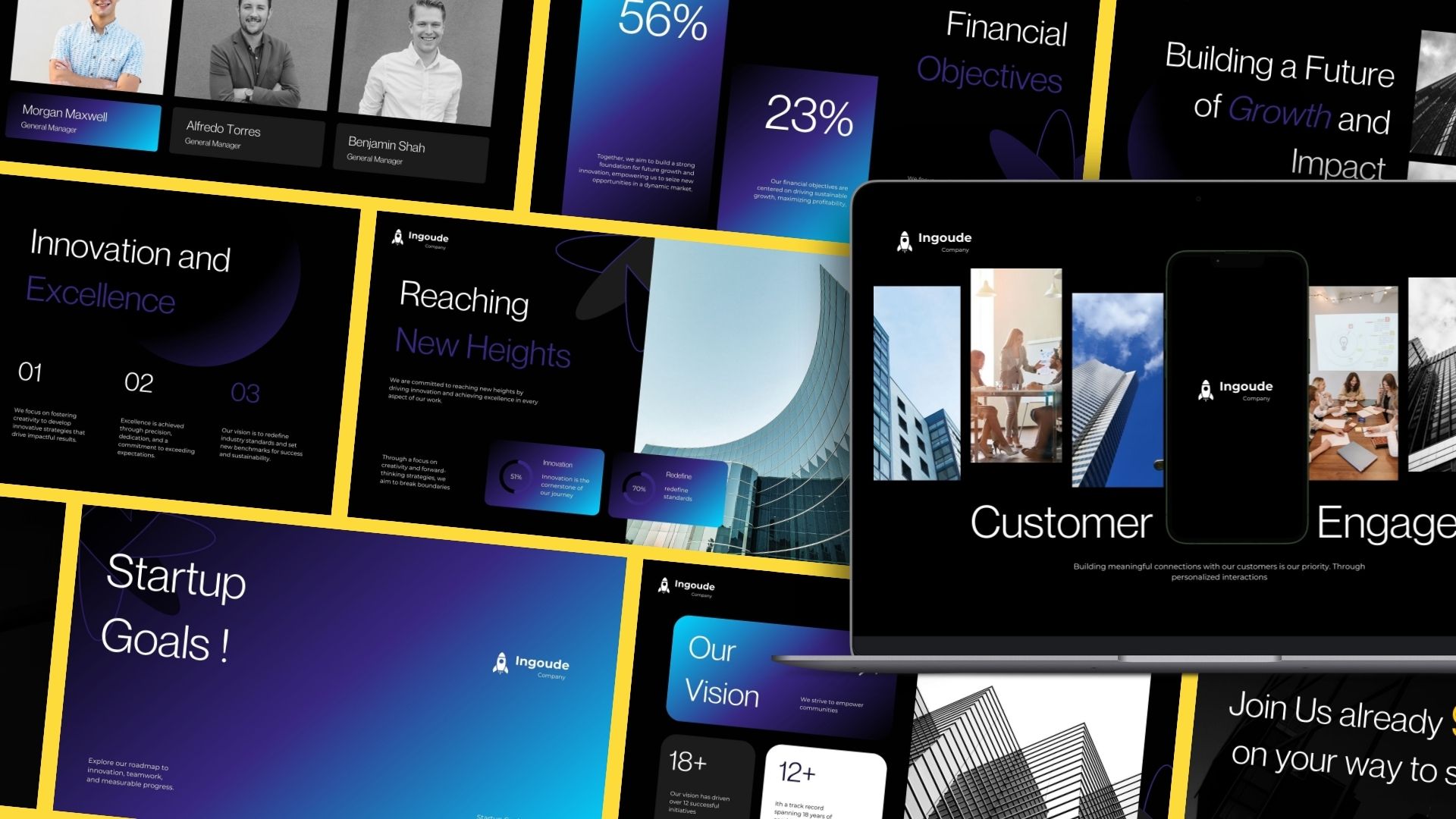The web is no longer just a collection of pages — it’s becoming a living system. Interfaces that once waited for user input are now learning to anticipate it. Every click, pause, and scroll provides signals that modern frontends can interpret, adapt to, and even predict. This marks the rise of the intelligent frontend — an interface that doesn’t just display content, but understands context.
For the past two decades, frontend evolution has been defined by responsiveness and interactivity. We optimized for screen sizes, performance, and accessibility. But in 2025, a new shift is taking place: from responsive to cognitive design. Instead of simply reacting to user actions, websites and apps are beginning to think — shaping experiences based on patterns, preferences, and intent.
This transformation isn’t about replacing designers or developers with AI. It’s about merging human creativity with machine intelligence to create systems that feel personal, effortless, and alive. The intelligent frontend is not the next framework — it’s the next mindset.
In this article, we’ll explore how this evolution is unfolding: the technologies behind adaptive interfaces, the real-world examples driving it, and the ethical boundaries that will define the future of digital experience.
From Static to Smart: The Evolution of Frontend Design
For decades, web design was about structure, not understanding. Websites were built to inform, not interpret — to present information, not to learn from interaction. The evolution of the frontend has always reflected technological progress, but for the first time, it now reflects cognitive progress. The modern interface is no longer a surface that reacts — it’s a system that perceives.
The transition from static to intelligent frontends represents a fundamental shift in purpose. The interface stops being a passive frame and becomes an active participant in the experience. It senses, adapts, and improves, driven by signals that once went unnoticed — patterns of movement, timing, and context.
The future of interaction design lies in systems that listen before they speak.
— Alan Cooper
The story of this transformation is not linear; it’s exponential. With each technological layer — from HTML to responsive frameworks to AI-driven logic — the web has gained awareness. Today, the goal is not to build more pages, but to build systems that understand why a user is there at all.
The Historical Arc
The evolution of frontends can be seen as a progression from presentation to perception.
- Static Era: information was published but never personalized.
- Dynamic Era: systems began to react, but without comprehension.
- Intelligent Era: interfaces now observe, infer, and predict, turning every interaction into a learning moment.
Each phase reduced friction but increased expectation. Users no longer want interfaces that simply respond — they expect ones that anticipate. The modern web is moving toward a state where behavior becomes dialogue and every click is interpreted as context.
Technology is most powerful when it disappears into understanding.
— Don Norman
What Makes a Frontend “Intelligent”
An intelligent frontend doesn’t rely on static logic. It learns dynamically, adjusting based on data and environment. Its purpose is not to automate responses, but to optimize outcomes.
Key attributes include:
- Context-awareness — recognizing where, when, and how interaction happens.
- Adaptability — modifying behavior without manual intervention.
- Prediction — identifying intent before it is explicitly expressed.
- Continuous learning — refining models through real usage patterns.
These systems blur the line between engineering and design, merging code with cognition. Intelligence at the frontend is not an aesthetic upgrade; it’s an epistemological one — it changes how products know.
Artificial intelligence isn’t the goal — adaptive intelligence is.
— Jensen Huang
The New Design Paradigm
The emergence of intelligent interfaces requires a new way of thinking about creation. Designers and developers are no longer building objects — they are shaping behaviors. The question is no longer how should this look?, but how should this respond?
Modern UX now includes three parallel objectives:
- Clarity — maintaining transparency while complexity grows.
- Empathy — ensuring that adaptation serves human needs, not just efficiency.
- Trust — designing systems that evolve predictably and ethically.
Good design will not replace humans; it will understand them better.
— Irene Au
The intelligent frontend represents a quiet revolution — one where understanding replaces reaction, and where the web itself begins to think.
Inside an Intelligent Frontend: How It Works
The word “intelligence” in design often conjures images of automation or complexity. Yet, the essence of an intelligent frontend is not in how much it does — but in how well it perceives. Unlike traditional systems that execute static logic, these new interfaces evolve through continuous interpretation of context. Every movement, every pause, every hesitation becomes data that informs adaptation.
The intelligent frontend works as a living feedback mechanism. It receives signals, forms assumptions, tests them, and refines its behavior. This is not merely responsiveness — it is reflection. It’s a shift from deterministic interfaces to probabilistic ones, where outcomes are guided by observation and learning.
The interface of the future will not just wait for input — it will sense intention.
— John Maeda
To function this way, an intelligent frontend relies on three interdependent layers: sensing, reasoning, and acting. Together, they form the foundation of cognitive interaction design.
The Three Layers of Intelligence
At its core, the intelligent frontend operates through a loop of perception and adaptation.
- Sensing — the system gathers signals, from user behavior to environmental variables like device or location.
- Reasoning — it interprets these signals, recognizing patterns or anomalies that suggest a user’s intent.
- Acting — it responds adaptively, refining layout, content, or flow in real time.
While these steps seem mechanical, they rely on subtle design decisions. The power of this structure lies not in prediction alone, but in the responsibility of its use. What data should it notice? What behaviors should it change? An intelligent system is only as valuable as the empathy embedded within its algorithms.
When machines learn from humans, they also inherit our values — or our blind spots.
— Fei-Fei Li
The Role of AI Models
AI models bring the intelligence layer to life, but they don’t replace the human element. They operate as interpreters — turning patterns into insights. Through natural language models, behavioral analytics, and recommendation engines, frontends gain a new kind of flexibility: the ability to think statistically about user needs.
However, intelligence without direction easily becomes manipulation. A well-designed system must know when not to adapt, when to respect ambiguity rather than resolve it. This balance — between guidance and autonomy — is what defines a responsible frontend.
A good system doesn’t tell users what to do; it helps them see what matters.
— Don Norman
Even in their sophistication, intelligent interfaces remain human in purpose. They are built to reduce cognitive load, not remove choice. They simplify without oversimplifying, and they learn not to dominate, but to support.
Designing for Adaptability
Adaptability is the most critical and misunderstood quality of an intelligent frontend. It is not about endless customization; it’s about flexibility within boundaries. A system that adapts to everything risks becoming unstable. True adaptability is controlled evolution — knowing how far to go without breaking user trust.
To design for adaptability means building interfaces that respond gracefully to uncertainty. It means embracing iteration not as an afterthought, but as a principle of design. The best systems grow with their users, reflecting their patterns without overwhelming their agency.
Key principles for adaptive design include:
- Preserve consistency even as content changes.
- Let systems learn quietly, not visibly.
- Prioritize transparency over novelty.
Adaptation is not about reacting faster; it’s about learning deeper.
— Tim Brown
The intelligent frontend, at its best, becomes invisible — not because it hides, but because it understands. It recognizes not just what users do, but why they do it, transforming every interaction into an ongoing dialogue between technology and intent.
Real-World Applications and Emerging Use Cases
Intelligent frontends are no longer a vision of the future — they are quietly shaping the present. Across industries, AI-driven interfaces are transforming the way people interact with digital products. What makes this transformation profound is not the technology itself, but how it redefines the user experience. The focus is shifting from serving static information to understanding behavioral context — anticipating what users need before they even articulate it.
These systems don’t aim to impress with complexity. Their success lies in subtlety — in interfaces that adapt naturally, almost imperceptibly, creating a sense of continuity between user intent and system response. The best intelligent frontends feel less like tools and more like partners: attentive, consistent, and responsive to nuance.
The most advanced technology is the one that feels invisible.
— Douglas Engelbart
eCommerce and Personalization
In commerce, intelligence is rewriting the rules of discovery. Traditional interfaces relied on filters and categories, forcing users to search within rigid structures. Intelligent frontends, by contrast, learn from the user, tailoring navigation and presentation to match intent. This shift from static search to dynamic guidance changes not just how users buy, but how they decide.
Such systems operate quietly in the background. They analyze browsing patterns, dwell time, and purchase behavior, translating them into predictive insights. The result is not aggressive recommendation, but subtle orchestration — a design that reduces friction without overtly steering choice.
Personalization is not about knowing more — it’s about guessing less.
— Satya Nadella
These principles extend beyond sales. They foster trust, efficiency, and even emotional resonance. When a system understands without intruding, interaction becomes effortless — and loyalty follows.
SaaS and Enterprise Tools
In the world of software-as-a-service, intelligence is emerging not as a feature, but as an operating principle. Applications that once relied on manual configuration now optimize themselves. Dashboards evolve as they observe how teams use them, prioritizing the most relevant data while suppressing the noise.
Here, intelligence functions as clarity. It enables systems to surface insights before they are requested, turning data into direction. Intelligent interfaces in enterprise products are not about automation — they are about amplification, helping professionals make faster and better-informed decisions.
Information is abundant; attention is scarce. Intelligence filters, not floods.
— Herbert Simon
What distinguishes these tools is that they learn not only from individuals, but from collective behavior. They identify workflow patterns across organizations, continuously refining how information is presented. The result is a living system — one that grows more effective with every use.
Content and Media Interfaces
In content-driven environments, intelligence transforms the way stories are consumed. Instead of presenting the same structure to every visitor, modern frontends now adapt to reading habits, pace, and tone preference. This creates an experience that feels intentionally crafted, even when it’s algorithmically generated.
Such adaptability doesn’t merely personalize content — it respects context. An intelligent media interface may highlight depth when the reader slows down or summarize when attention fades. It recognizes the rhythm of human focus and shapes itself accordingly.
The true measure of intelligence is not speed, but sensitivity.
— Brian Eno
As these adaptive systems become standard, the boundaries between product and user begin to blur. The interface stops being a layer of mediation and becomes an extension of cognition itself — a shared space where understanding evolves on both sides.
In every application — commerce, software, or media — intelligent frontends are redefining what digital interaction means. They mark the quiet emergence of a new paradigm: one where technology no longer demands adaptation from users, but learns to adapt to them.
Challenges, Ethics, and the Human Factor
As interfaces become more intelligent, they also become more influential. The same systems that anticipate user needs can, if misused, shape behavior in unintended ways. The power to adapt and predict introduces not only design opportunities but profound ethical responsibility. Intelligence in design demands not just precision — it demands conscience.
The emergence of adaptive frontends forces a difficult question: Who controls the conversation — the user or the system? In an age where design decisions can steer emotion, attention, and even belief, responsibility can no longer stop at usability. It must extend to trust, transparency, and human autonomy.
Technology’s progress is measured not by what it can do, but by what it chooses not to.
— Sherry Turkle
True intelligence in web design is not about predicting every action. It’s about creating an environment where prediction coexists with permission — where adaptation never crosses the line into manipulation.
Data Sensitivity and Privacy Risks
Every intelligent system is built on data — and every dataset represents human behavior, identity, and intent. The balance between usefulness and intrusion is delicate. A system that learns too much risks violating privacy; one that learns too little loses its edge.
To maintain trust, intelligent frontends must adhere to principles of data ethics, which can be summarized as follows:
- Transparency: users should know what is collected and why.
- Consent: data should serve the individual who provides it.
- Security: intelligence without protection is exploitation.
Data is not the new oil — it’s the new oxygen. Treat it carefully, or you’ll suffocate trust.
— Tim Cook
In practice, this means limiting what is tracked, anonymizing context, and prioritizing user benefit over system ambition. Intelligence should empower people — not profile them.
Transparency and Explainability
An intelligent interface that can’t explain itself becomes alien. As AI-driven systems automate more decisions, users need to understand why those decisions occur. Explainability transforms intelligence from black-box mystery into collaborative reasoning.
Clarity doesn’t mean exposing every algorithm. It means offering insight into intent — showing the reasoning behind changes, suggestions, or personalization.
Some practices that encourage transparency include:
- Providing short, plain-language descriptions of why a feature adapts.
- Allowing users to undo or override automated choices.
- Including a “why am I seeing this?” layer for recommendations or layout shifts.
If intelligence hides its reasoning, it ceases to be intelligent — it becomes obedient.
— Susan Etlinger
The most trusted systems are not those that always get it right, but those that are honest when they don’t.
Human-in-the-Loop Design
The ultimate safeguard in intelligent systems is the human factor. Machine learning can process faster, but it cannot care. Designers, developers, and users must remain active participants in guiding how intelligence behaves.
Human-in-the-loop design ensures that AI enhances creativity rather than replacing it. Instead of full automation, the focus is on augmentation — using intelligence to extend, not override, human judgment.
Key principles that preserve humanity in the loop:
Collaboration: AI assists; humans decide.
Interpretation: systems suggest; people contextualize.
Reflection: every automated outcome should invite feedback.
Artificial intelligence will never replace human intelligence — it will only reveal its depth.
— Fei-Fei Li
The intelligent frontend reaches its highest form when it acts as a companion, not a controller. In this partnership, technology learns empathy, and humans gain amplification — a dialogue that preserves meaning even as machines learn to think.
Conclusion: When the Web Starts to Think
The rise of intelligent frontends marks a turning point in digital evolution. The web is no longer a static medium — it has become a system of perception, learning, and adaptation. What was once designed to respond is now beginning to understand. This transformation carries both promise and responsibility: the power to create experiences that feel human, and the duty to ensure they remain humane.
In the years ahead, every product will face the same challenge — not whether it can think, but whether it should. The most successful teams will not chase automation for its own sake; they will focus on meaning, transparency, and empathy. Intelligence in design is not measured by algorithms, but by awareness — awareness of context, of consequence, and of the people on the other side of the screen.
The future of the web isn’t about making machines smarter — it’s about teaching them to understand us better.”
— John Maeda
As intelligent frontends continue to evolve, one truth remains constant: technology should always adapt to humanity, not the other way around. The next generation of design will not just build systems that think — it will build systems that listen, learn, and respect.



